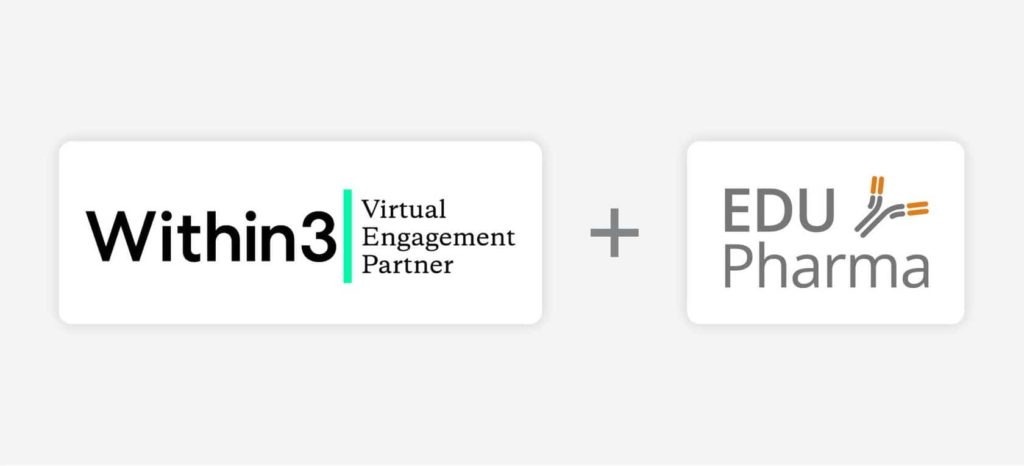Article updated May 2023.
KOL management is the process of building and maintaining beneficial and sustainable relationships with key opinion leaders (KOLs) and key external experts (KEEs).
Typically, KOLs and KEEs are well-known, respected physicians with specific medical experience who advise pharmaceutical organizations on drug development, clinical trials, clinical research, regulatory compliance, and marketing. A key expert might also be a nurse, pharmacist, researcher, or other health professional.
Each of these experts will have an area of expertise – for instance, a KOL in clinical research will have a slightly different role than a medical affairs KOL. To derive maximum benefit from their KOLs, pharmaceutical teams must intentionally build and foster productive relationships with them in a process that begins with KOL identification and KOL mapping. What are the best practices for KOL management in pharma?
Marketers and medical staff across the drug life cycle must approach key opinion leader management as a component essential to their work’s success. Without well-defined, planned, structured KOL management activities, pharmaceutical organizations run the risk of mismanaging relationships with these physicians – at significant cost, potential adverse effects on a successful drug launch, or even compliance problems.
How does KOL management work?
KOL management involves:
KOL engagement
Engagement is the predominant part of KOL management and is designed around the organization’s set objectives for each specific KOL or group of KOLs. KOL engagement activities may include attending internal and advisory board meetings and conferences, clinical study design, and KOL marketing material review. A formal engagement plan may detail KOL interactions and activities to ensure consistency and replicability. Tracking, auditing, and reporting KOL engagement is essential to improving the overarching management program.
KOL assessment
Measuring the impact and success of a KOL management plan is critical to improvement and resource optimization. The performance and execution of agreed-upon activities should be monitored using predefined key performance indicators, or KPIs, and key execution indicators, or KEIs. But assessment shouldn’t be limited to just the KOLs – pharmaceutical companies should also evaluate how the KOLs they work with receive and react to engagements.
Other aspects of KOL management include KOL mapping, which considers KOLs within the larger context of the organization’s entire KOL portfolio, and KOL segmentation, which divides KOLs into groups based on their influence, expertise, collaboration preferences, and other characteristics.
KOL management can be handled in-house by an organization’s medical affairs team or by an external medical communications agency specializing in KOL management. However, some pharmaceutical organizations prefer a hybrid model, where its medical affairs team and a KOL management firm collaborate on managing these experts.
Ready for better KOL engagement? Let’s start something new today.
Best practices for good KOL management
KOL management and education are typically the responsibility of the medical science liaison vs medical affairs team more broadly. There are a number of best practices MSLs can use to establish and strengthen positive relationships with valued experts.
Establish clear communication
Clear and concise communication with KOLs helps increase participation in your meetings and advisory boards. It also eliminates confusion and makes KOLs feel as though their time is valued. Good KOL communication includes providing them with regular updates on scientific developments, new products, and any changes to regulatory guidelines that may impact their work. If you’re engaging KOLs in a virtual environment, ensure they understand how to use the environment. Take advantage of automated messages and reminders to increase convenience and participation.
Be proactive
Being proactive in your approach to KOL management means reaching out to them, rather than waiting for them to engage with you. KOLs and KEEs are busy – can you provide them with information that benefits them? Can you address a challenge they might be having? It’s a good idea to regularly contact your KOLs to offer support and to gather insights on their needs and challenges.
Be responsive
The flip side of being proactive is being responsive. KOLs value prompt responses to their inquiries – particularly if you have asked them to take time from their schedule and give you something that benefits you and your team, such as their feedback on an upcoming data release or proposed study protocol. Be available and responsive when they need you.
Build trust
Building trust is crucial in KOL management. Be transparent, provide accurate and up-to-date information, and follow through on your commitments. When you treat KOLs and KEEs as valued stakeholders, they will typically respond in kind.
Foster collaboration
To foster a culture of collaboration with KOLs, think outside the box. It’s not a one-way relationship – invite KOLs to participate in meetings where they might learn something (or where you might learn something. Enlist them in scientific meetings, research collaborations, and other activities that align with their interests and expertise.
Be respectful
For most MSLs and medical affairs teams, this likely goes without saying. However, you should be prepared to occasionally hear a dissenting or even a negative opinion. This might cause you to re-evaluate parts of your strategy or create another step in your work. Consider it a future investment in your ultimate goal of a more successful trial, flawless launch, or better patient outcomes. Be open to feedback and be willing to consider alternative perspectives.
Be human
Take the time to understand the KOL’s perspective, interests, and goals. This can help you to build a more productive and meaningful relationship.
Impact of successful KOL management
Ultimately, pharmaceutical organizations engage with KOLs to develop and advocate for drug products and to lend them credibility.
When KOLs are successfully managed, nearly all stages of the drug product lifecycle benefit – from initial drug discovery to regulatory and market entry. Persuasive medical and marketing material, sped-up patient recruitment for trials, wide-reaching trial results, strong consumer awareness of drug products, and influencing HCP prescribing behaviors are some of the measurable impacts of successfully managed KOLs.
The benefits of successful KOL management go two ways. Pharmaceutical organizations get a worthwhile return on their investment in KOL engagement in the form of expert insight. KOLs receive opportunities for peer-to-peer interaction, the ability to grow their expert standing, the chance to share information and learn collaboratively, and honoraria.
KOL management as an ROI calculation tool
Pharma companies are often under pressure to tender the results of their extensive and often costly KOL management activities. This can be difficult, especially in geographical locations where the pharmaceutical industry is highly regulated. However, with defined processes, tangible goals, structured information capture and reporting, and advanced relationship management technologies, the impact of pharma KOL engagement can be determined and assessed.
How to make KOL interactions more flexible
There are many methods of engaging KOLs to obtain insights – in-person meetings, web meetings, asynchronous engagement – but the best venue for KOL engagement is the one that gives experts the ability to be the most responsive. While many KOLs enjoy face-to-face interaction, not every KOL has the ability or desire to travel frequently, and while contributing their expertise is important, so is the time they spend at work and home. In-person KOL engagements can involve long planning timelines and significant budgets but are still subject to last-minute changes that can negatively affect the result of the engagement and the projects that depend on the outcome.
Pharmaceutical company teams can manage the unpredictability of KOL engagements and more carefully assess the results using a hybrid engagement approach that includes asynchronous discussions. By conducting typical interactions – such as a virtual advisory board – via a virtual engagement platform, pharmaceutical teams can see which KOLs are logging in, how much time they spend responding and contributing while on the platform, and gather qualitative and quantitative data for use in critical decision-making.
Learn more about the benefits of providing a better experience for KOLs in our blog post, “The strategy behind a better KOL experience.”






